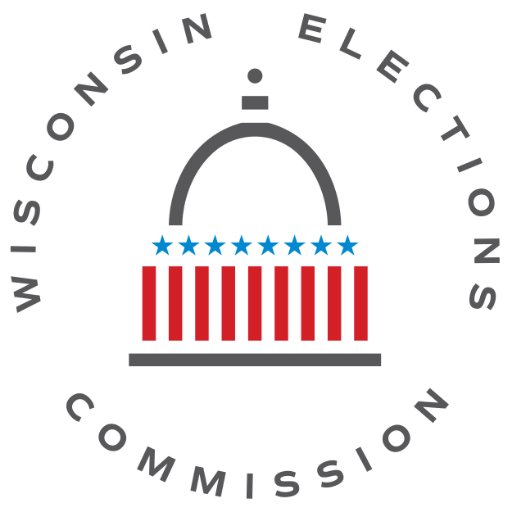Election News: Important Reminders for Voters about the February 18 Spring Primary
MADISON, WI – Voters across Wisconsin will have a Spring Primary for Supreme Court on Tuesday, February 18, while voters in the 7th Congressional District in Northern Wisconsin will also have a congressional primary, according to the Wisconsin Elections Commission.
In addition, there will be 96 primaries for county, school district, city, village and town officials, according to data compiled by the WEC. There will be five local referendums on the ballot.
“With the Supreme Court and congressional primaries, this will be a big Spring Primary for Wisconsin,” said Meagan Wolfe, Wisconsin’s chief election official. “There are important things voters need to know.”
Photo ID required
“Most people already have the ID they need to vote,” Wolfe said. “If you don’t have a photo ID you still have time to get a free one at the DMV, but you should not delay.”
Acceptable photo IDs for voting include a Wisconsin driver license or Wisconsin state ID card, Veterans Health Administration ID card, military ID card, U.S. passport, tribal ID card and some student ID cards. Voters who do not receive a state ID card by Election Day can still use the receipt issued by the DMV. A full list of acceptable photo IDs is available at www.BringIt.WI.gov.
Wolfe reminds voters that the address on their photo ID does not need to match the address on the poll book. “When you show your ID, you are proving your identity, not where you live,” she said. “Voters prove their residence when they register to vote.”
Also, voters should know that all Wisconsin driver licenses and state ID cards work for photo ID, regardless of whether they have the “Real ID” star on them, Wolfe said.
Checking your registration
Wolfe urges voters to visit the MyVote Wisconsin website (https://MyVote.WI.gov)to check their registration status, see what’s on their ballot and find their polling place. You can find your voter information by putting in your name and date of birth, but if you’re not registered yet you can search by your address to see what’s on your ballot and where to vote.
No voters have been removed from the voter registration list because of a recent court case involving a mailing to voters who may have moved, Wolfe said. In October 2019, the WEC mailed letters to more than 232,000 voters who may have moved according to DMV and post office records.
Wolfe said there will be a watermark on the poll book for voters who have not reregistered if they moved or confirmed their address if they have not moved. Poll workers will ask these voters if they have moved. Voters who have not moved will be asked to sign the poll book and affirm that they have not moved before the poll workers issue them a ballot. Voters who have moved must reregister, as required by law. The requirement to reregister is true for all voters who have moved, not just those with the watermark.
What’s on the ballot?
All eligible voters will have the opportunity to vote in the three-way primary race for Wisconsin Supreme Court, which will narrow the field to two finalists for the Spring Election on April 7.
Voters in the 7th Congressional District will have Democratic and Republican primaries for a special election to fill a vacant seat in Congress. Both parties have two candidates on the ballot, and the primary will narrow the field to one Democrat and one Republican for the special election to be held on May 12, 2020. The Constitution Party does not have any candidates on the ballot, but voters who wish to participate in that primary may write in a candidate’s name. On February 1, there were 412,159 registered voters in the 7th CD.
Voters in Milwaukee County will have a primary for County Executive to narrow a field of four candidates to two for the April 7 Spring Election. A mayoral primary in the City of Milwaukee will also narrow a field of four candidates to two. There are many other primaries on local ballots on February 18. A list of all primaries and referendums is attached to this news release.
What’s not on the ballot?
Wisconsin’s presidential preference primary is not on the February 18 ballot. It will be held on April 7 in conjunction with the Spring Election.
Special absentee ballots in the 7th Congressional District
Some absentee voters in the 7th Congressional District have received two different ballots in the mail. The first ballot, sent to those with a request on file before January 28, 2020, is only for the congressional primary. This ballot was sent because state law requires absentee ballots in federal primaries and elections to be sent out 47 days before the election to voters with a request on file. This is called an “A ballot.” State law requires 47 days for absentee ballots with federal elections so military and overseas voters have enough time to receive and return their ballots.
In addition to the congressional primary, the second ballot has the Wisconsin Supreme Court primary and any local primaries in the voter’s area. This is called a “B ballot.” These ballots could not be printed until late January because state and local candidate lists were not ready until then.
If voters return only the A ballot, that will be counted. If they return only the B ballot, that will be counted. If they return both the A and B ballots, only the B ballot will be counted.
Register or reregister at the polls
Wolfe reminds voters that if they plan to register for the first time or update their registration with a change of name or address at the polls on Election Day, they must bring a proof of residence document like a utility bill, showing the voter’s current name and address.
“Election Day registration ensures that everyone who is qualified to vote will get to vote,” said Wolfe, administrator of the WEC. “However, you must bring a current proof of residence document to register on Election Day.”
Acceptable proof of residence documents also include a lease, bank statement, cell phone bill or other official government documents, and can be on paper or an electronic device like a smartphone or tablet. A list of acceptable documents is available at https://elections.wi.gov/publications/voter-guides/proof-of-residence. Before Election Day, you must have lived at your current address for at least 10 days to be eligible to vote, but the proof of residence document does not need to be 10 days old.
You can also register to vote before Election Day. Registration in your municipal clerk’s office takes place until 5 p.m. on the Friday before the election (February 14, 2020). Remember, you will still need to bring your proof of residence document to register. By law, Wisconsin’s electronic voter registration system is turned off within 20 days of an election but will be available again on Feb. 19 after the Spring Primary. Voters can still start the registration process online at https://myvote.wi.gov by filling out an electronic form, printing it and bringing the paper copy to their municipal clerk’s office or the polling place on Election Day.
Other important reminders:
Absentee ballots must be received by Election Day. If you had an absentee ballot mailed to you, it must be received by your polling place or municipal clerk’s office by 8 p.m. on Election Day (February 18, 2020).
Your voter registration information and your vote are safe. Wisconsin’s voter registration system is secure and encrypted to protect from hackers. All of Wisconsin’s voting systems are paper-based and contain multiple checks and redundancies, including pre-election testing and processes for media, campaign, and election officials to check, audit, and validate the results.
Provisional ballots are available if you don’t have a photo ID.A voter may cast a provisional ballot if the voter does not have a photo ID, forgets to bring a photo ID to the polls, or if the poll workers do not accept the ID for some reason. A provisional ballot is just like a regular ballot, except that it is placed in a special envelope and is not counted unless the voter returns with an acceptable photo ID. The deadlines for fixing a provisional ballot are 8 p.m. on Election Day at the polling place or by 4 p.m. the Friday after the election in the municipal clerk’s office. Voters who left their photo ID at home can also simply retrieve it and then cast a ballot rather than casting a provisional ballot. However, provisional ballots are not available for individuals who are unable to complete their registration.
NOTE: This press release was submitted to Urban Milwaukee and was not written by an Urban Milwaukee writer. While it is believed to be reliable, Urban Milwaukee does not guarantee its accuracy or completeness.
Mentioned in This Press Release
Recent Press Releases by Wisconsin Elections Commission
WEC Schedules Public Hearing on Proposed Administrative Rules
Dec 3rd, 2025 by Wisconsin Elections CommissionPreliminary Hearing on Proposed Rules for Voting Equipment/Ballot Security, Training of Election Inspectors and Special Voting Deputies




















